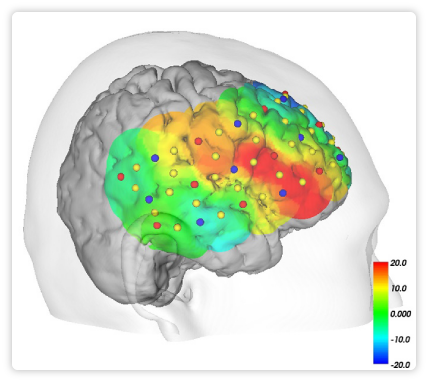Division of Oral Physiology
|
Faculty

Kensuke Yamamura
DDS. Ph.D.
Professor, Division of Oral Physiology
Niigata University Graduate School of Medical and Dental Sciences
Dr. Kensuke Yamamura went on to complete his PhD with Dr. Yoshiaki Yamada
at Niigata University, Division of Oral Physiology in 1994.?After completion
of his PhD, Dr. Kensuke Yamamura worked as a postdoctoral fellow with Dr.
Barry J Sessle in the Division of Oral Physiology at the University of
Toronto.
+ Education
DDS: Niigata University
PhD: Niigata University
+ Expertise
Brain Function, Mastication, Swallowing, Motor Function
+ Publications

Keiichiro Okamoto
DDS. Ph.D.
Associate Professor, Division of Oral Physiology
Niigata University Graduate School of Medical and Dental Sciences
Dr. Keiichiro Okamoto worked with Prof. Emiko Senba at Wakayama Medical
University, Dept. Anatomy and completed his PhD with Prof. Yasuhiko Tamai
at Wakayama Medical University, Dept. Physiology in 2006. Dr. Keiichiro
Okamoto also worked as a research fellow with Prof. David A. Bereiter at
Brown University Medical School (2001~2003) and University of Minnesota,
School of Dentistry (2006~2015) in the USA. "
+ Education
DDS: Kyushu dental University
PhD: Wakayama Medical University
+ Expertise
Neuroscience, Neurobiology of Pain
+ Publications

Masayuki Kurose
DDS. Ph.D.
Assistant Professor, Division of Oral Physiology
Niigata University Graduate School of Medical and Dental Sciences
Dr. Masayuki Kurose went on to complete his PhD with Dr. Yoshiaki Yamada
at Niigata University, Division of Oral Physiology in 2004. After completion
of his PhD, Dr. Masayuki Kurose worked as a postdoctoral fellow with ?Dr.
Ian Meng at University of New England in the Center of Biomedical Research
Excellence for the Study of Pain and Sensory Function.
+ Education
DDS: Iwate Medical University
PhD: Niigata University
+ Expertise
Neuroscience, reflex motor control, Dry Syndrome, neurobiology of Pain
+ Publications
For more than three decades, our faculty has been studying orofacial motor function and sensory processing from a basic science perspective. Investigators have international reputations for their work in the field of mastication, swallowing and pain. They have been successful in explaining some of the mechanisms of 1) coordination of mastication and swallowing and 2) orofacial and ocular pain.
+ Project 1 Mastication and Swallowing
In the clinical management of patients with impaired function of mastication and swallowing, practitioners have involved in rehabilitation aimed at restoring its efficiency. Our research projects have a long tradition to determine the functional physiology of mastication and swallowing. Accordingly, evidence provided by our human and animal studies that we have employed clearly contribute to provide possible mechanisms underlying mastication and swallowing that is unique to orofacial and dental field.
+ Project 2 Neuroimaging
The human brain has about 100 billion neurons. Humans take in the information associated with hearing, touch, smell, and taste from sensory organs and convert this information to electrical signals which are then sent to the brain. Neurons in the brain process this information through mutual exchange of the signals to determine the next action. During this process, oxygenated hemoglobin (oxyHb) supplies oxygen via capillary vessels. NIRS technology can analyze the functional localization of the brain by measuring this reaction in real time using near infrared light. Our main interests by using NIRS technology is to access the involvement of higher brain center (eg. Prefrontal Cortex) in orofacial movements.

+ Project 3 Pain mechanisms in deep craniofacial tissues
Our main interests include central nociceptive processing in several structures such as temporomandibular joint and masticatory muscles. Emphasis for the basic research is directed on the several issues in how changes in vegetative function such as autonomic function and hormonal status could affect trigeminal nociception in the brain and how trigeminal pain influences orofacial motor function like jaw muscle activity. Most techniques for these research in Project 2 and 3 employed extracellular neural recording from trigeminal primary afferents and trigeminal subnucleus caudalis, EMG recording from masticatory muscles, orofacial behavioral and immunohistochemistry in vivo condition.

+ Project 4 Pain mechanisms under dry syndromes in the eye and mouth
Pain can be caused by noxious stimulation to organs in the body, while possible environment changes in the absence of any obvious external (harmful) stimuli at the ocular surface and oral tissues are sufficient to cause uncomfortable sensations like pain. These findings obviously indicated that alterations of autonomic function have substantial roles to influence pain processing. Dry syndromes such as dry eye and dry mouth are commonly seen in clinics, but are hard to treat because of the lack of knowledge regarding their precise mechanisms. Hypotheses concerning the basis for uncomfortable sensation (mostly pain) in the eye and mouth should account for the chronic nature, decreased motor function and its association with alterations in autonomic function.

Prospective InternationalStudents
We are pleased that you are considering Graduate Students opportunities at the Division of Oral Physiology Niigata University Graduate School of Medical and Dental Sciences . Niigata University is a great place to study and work. If you are interested in working with us, please contact to us. No phone inquiries,?please.?